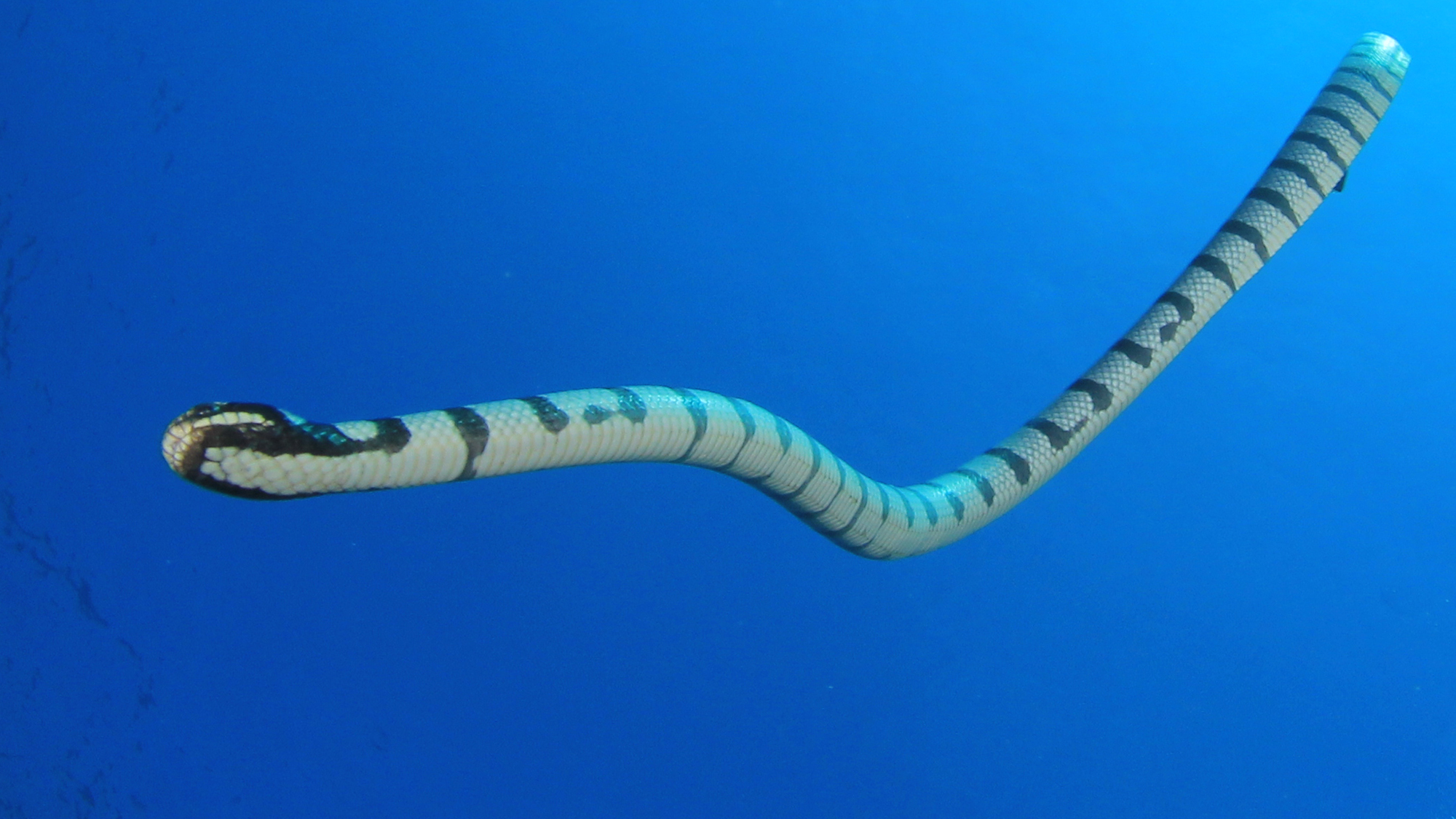

For annulated sea snakes, seeing the wonderful world of color wasn’t always possible. These venomous sea snakes that roam Australia and Asia’s oceans once lost their color vision, but a new study into their genomes reveals that they have potentially regained their ability to see a wider palette of colors over the last 100 million years. The findings were published July 12 in the journal Genome Biology and Evolution, published by Oxford University Press.
[Related: A guide to all the places with no snakes.]
For animals, normal color vision is mostly determined by genes called visual opsins. Multiple losses of opsin genes have occurred as tetrapods—a group including amphibians, reptiles, and mammals—have evolved. The emergence of new opsin genes is significantly more rare than losing them. A 2020 study found that some semi-aquatic snake species in the genus Helicops found in South America are the only known snakes to regain these opsin genes.
“The ancestral snake, which is the original snake species, lost the capacity for advanced color vision ~110 million years ago. This was because they likely dwelt in dim-light environments where visual perception would be limited,” study co-author and University of Adelaide PhD student and marine biologist Isaac Rosetteo tells PopSci.
This ancestral snake species lived on the land and would later evolve into all snake species, including sea snakes. When their genes for color vision were gone, they could only perceive a very limited range of colors. However, that likely started to change as some elapid descendants began to change. Within the last 25 million years, two elapid lineages have moved from terrestrial to marine environments.
With the fully sequenced genome of the annulated snake in hand, the team in this new study from the University of Adelaide in Australia, The University of Plymouth in the United Kingdom and The Vietnamese Academy of Science and Technology looked at visual opsin genes in five ecologically distinct species of elapid snakes. Elapids are the family of about 300 venomous snakes that include mambas, cobras, and the annulated sea snake. Looking at this family more broadly offered an opportunity to investigate the molecular evolution of vision genes.
The team found that the annulated sea snake now has four intact copies of the opsin gene SWS1. Two of these genes are sensitive to ultraviolet light that has shorter wavelengths, while the other two genes have evolved a new sensitivity to the longer wavelengths of light that dominate ocean habitats.
“Only one [of these genes] was expected. To our knowledge, every other ~4000 snake species in the world (except a couple of Helicops species) have just one of these genes. The most interesting part is that two of these genes allow for perception of UV light, while the other two allow for the perception of blue light. This is expected to dramatically increase their sensitivity to colors which could be very useful in bright-light marine environments,” says Rosetto.
The authors believe that this sensitivity means that the snakes could have color discrimination that allows them to distinguish predators from prey, as well as potential snake mates against the more colorful background in the ocean.
[Related: How cats and dogs see the world.]
This significantly differs from the evolution of opsins in mammals like bats, dolphins, and whales during their own ecological transitions. These mammals saw more opsin losses as they adapted to dim-light and aquatic environments.
“Our own primate ancestors developed the advanced color vision we enjoy via a similar mechanism. Their long-wavelength-sensitive opsin was duplicated, and one copy changed to allow for perception of a different wavelength of light than the original,” says Rosetto. “These snakes have done the exact same thing, just with a different visual opsin and there are now four copies instead of just two. Without these duplications, our (and their) capacity for color vision would be heavily reduced.”
